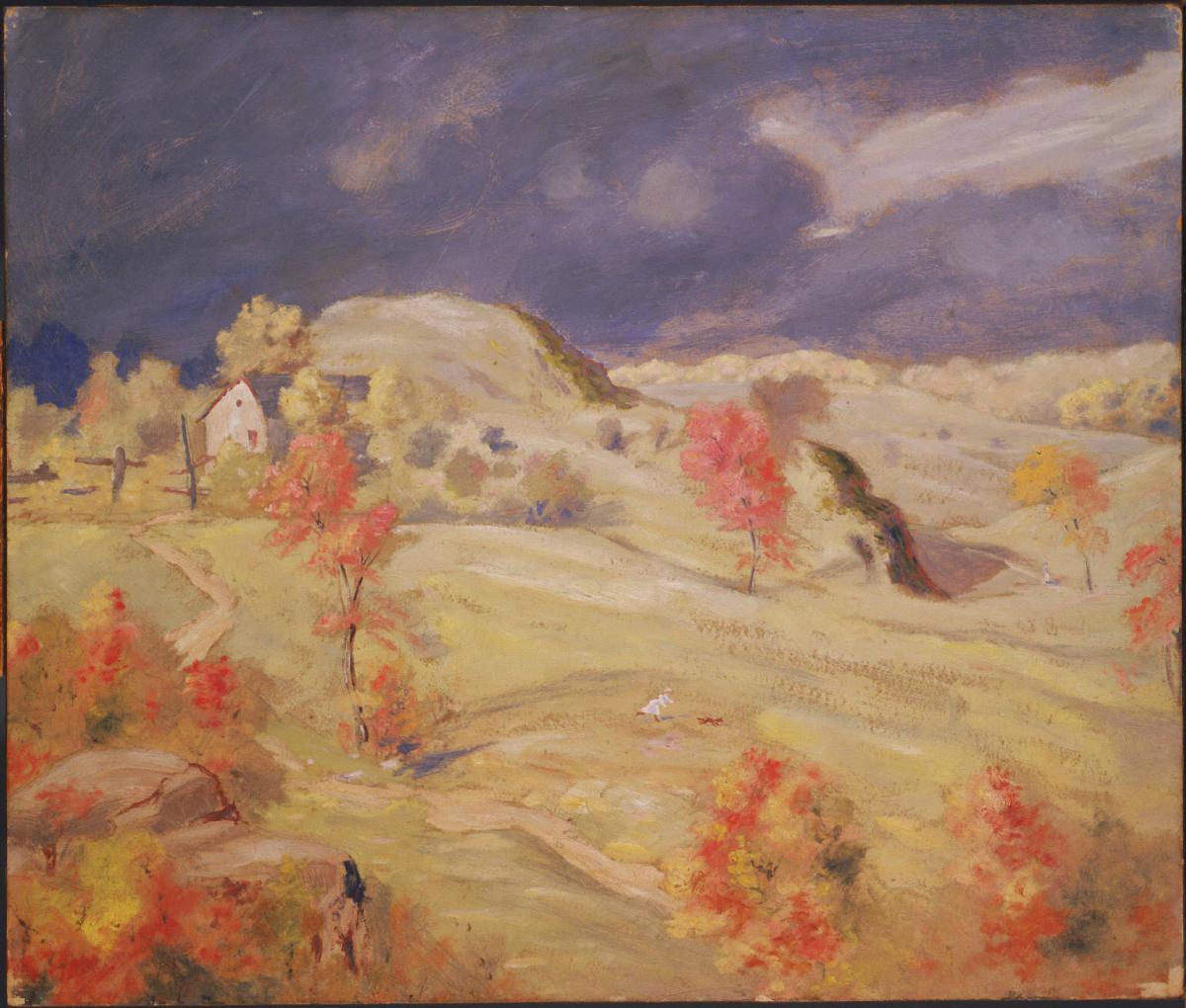Approaching Storm
Louis Michel Eilshemius ( 1890 )

Approaching Storm was painted a few years after Louis Michel Eilshemius completed his studies under Robert C. Minor. Minor’s influence on Eilshemius is evident in both the subject, a clearing framed by natural features, and the technique, seen in the movement in the clouds and the treatment of light and shadows. Eilshemius’s own style emerges in the woman dressed in white chasing a small pet. These figures, along with the reds, yellows, and oranges of the field, create whimsy, yet the churning sky and apparent change of season add an ominous undercurrent. Many scholars, including Duncan Phillips, have pointed to the liminal quality of Eilshemius’s work as representative of the artist. In 1939, Phillips wrote: “The man had his alternations of morning dew and blasting storm, his oscillations of playful spirits and bitter passion, so characteristic of the manic-depressive type.”[1]
However, perhaps due to the addition of the female figure, lighter color palette, and lack of detail compared to Minor or the Barbizon painters who greatly influenced him, “many observers quite simply [were] unable to take his work seriously.” Yet Eilshemius painted obsessively, sometimes painting directly on cardboard, without an undercoat, as in this work. A prolific artist, he created more than 3,000 paintings before his retirement in 1921.[2]
Text by Rebecca Shipman as part of the Seeing U.S. Research Project
[1] Duncan Phillips, “The Duality of Eilshemius,” Magazine of Art (1939): 697.
[2] Paul J. Karlstrom, “Louis Michel Eilshemius: A Closer Look,” American Art and Antiquity (September–October 1978): 63; and Phillips, “Duality of Eilshemius.”
Louis Michel Eilshemius struggled early in his career to acquire the fame and praise he desired. He worked tirelessly and made numerous sketching trips during the 1880s and 1890s throughout the Northeast, returning to his favorite haunts, including the Hudson River Valley, the Adirondack Mountains, and the Delaware Water Ga Approaching Storm is among the many landscape paintings Eilshemius made during these trips and painted in the style of his first teacher, Robert Minor, and the French Barbizon school. Duncan Phillips said that Eilshemius's landscapes possessed the "lyrics of light and color and perfect atmospheric values which are worthy of comparison with George Inness and even Corot, especially the early Corot."
Approaching Storm is ominous and has eerie colors and intense contrasts of light and dark, as compared with a similar work Adirondacks: Bridge for Fishing, in Phillips’s collection, which he praised for its “rural romanticism”. The stormy atmosphere and surging, swaying forms of the landscape set up a threatening scenario for the tiny figures running about. The psychological tensions and emotional expressiveness of the painting separate it from the landscape traditions that had initially influenced Eilshemius. Phillips saw Eilshemius's paintings as a bridge between old and new, and as possessing the expressive power of El Greco and Van Gogh, prefiguring the "improvisations on nature" of Bonnard and Marin, and anticipating the "subjective abstraction" of Dove and Tack.